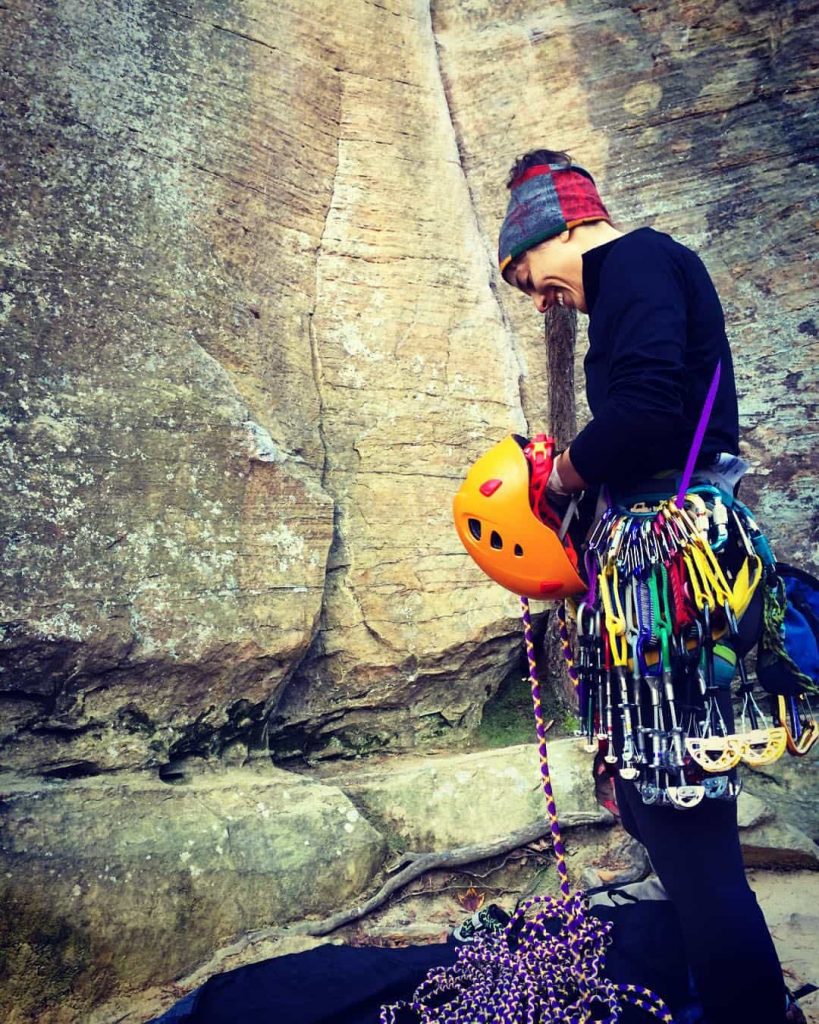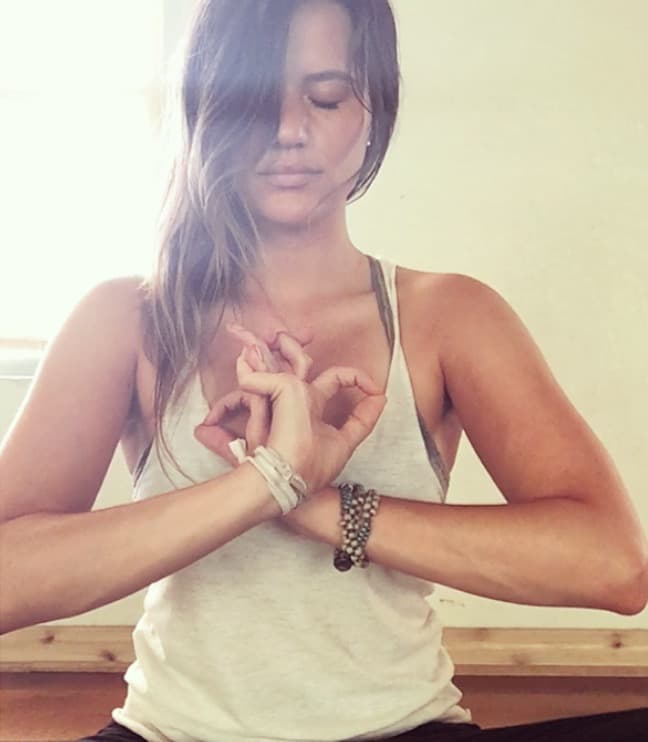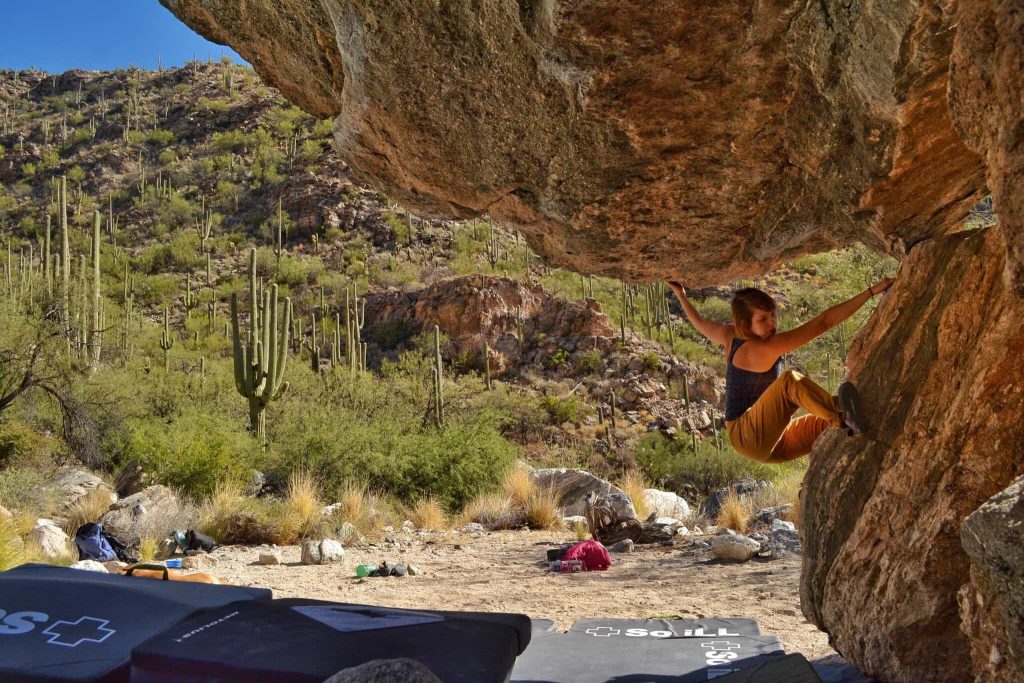In what will be a series of essays, Julia “Jules” McGuire breaks down how climbers benefit from a consistent yoga practice. Jules is both a seasoned yoga practitioner and a well travelled climber. She teaches two popular yoga classes on Saturdays (1230pm and 2pm) at the Avondale gym and can be spotted gracefully making her way up lead routes and boulder problems when class is over.

Pranayama: A Deeper Look
Before scaling up a wall, it is imperative that climbers understand their immediate atmosphere. How long is the climb, and what gear does the route call for? Is it a balance-dependent vertical climb or a powerful, sustained overhang? Assessing the climb helps to prepare a climber’s mental state and sets the expectation of how the climber’s body will need to perform and maneuver. Developing a keen awareness of one’s movement on a wall allows a climber to expand on their technicality, achieving deeper connectivity between their body and the wall itself as their stems crimp and pinch and tiptoe across the rock face.
Training on hangboards, maintaining cardiovascular health, and keeping a fit core all serve a clinging climber well. But how can climbers train their mental game to confront heady moves that could result in a big fall – leaving them dangling in midair from a rope with a diameter the size of their thumb?
Enter yogic breathing

A discussion on yoga can be approached from a multitude of angles: flexibility, fitness, meditation, even religion. There are also numerous yoga styles and forms, from static Hatha to dynamic Vinyasa, powerful Ashtanga to restorative Yin. But no matter how broad the scope, all sectors can agree on one very key factor: Pranayama.
Pranayama is the Sanskrit terminology used to describe yogic breathing exercises (in simple terms, prana means life force; yama / ayama means to restrain / to draw out.) Among many benefits, the practice of slow, disciplined breathing has been proven to have a direct effect on the body’s nervous system, specifically the parasympathetic nervous system commonly recognized as the “rest and digest” mode. This system allows for lowered blood pressure, increased circulation, and relaxation. Whenever the body is outside this realm of restoration, whether experiencing healthy, physical exertion or less desirable stressors like worrying and rushing, then the body is using the sympathetic nervous system, also known as the “fight or flight” system.
Through devoted efforts to harmonize both mind and body, yoga practitioners can begin to develop a heightened awareness of their internal atmosphere, and thus better recognize the impact of external stressors and the reactions they impose inside one’s body.
Attain focus, climb better

There are many different approaches to Pranayama with different goals.
Ujjayi breathing, translated as “victorious” breath is the most commonly known breathing technique. This practice is done by creating a pulling sensation of air in through the nose, almost as if you snore in air to the back of the throat. This audible, ocean-like breath not only sounds pleasant and soothing, but it allows the yogi to formulate a connection to their inner state.
Breathing through pursed lips (or even a “taco tongue”) helps cool the body down and relax nerves. Quick, forceful “ha” sounding exhales stoke heat in the core to build energy as well as detoxify.
Alternate nostril breathing, or nodi shodhana, translated as “energy channel cleansing,” allows for the hemispheres of the brain to balance differing functions such as rationality and creativity.

Whatever form you practice, climbers armed with the knowledge of Pranayama can attain a calm, focused state through learned breath work. This state more adequately prepares the climber to concentrate on the task at hand – namely, leading a tall, overhanging route that demands the entirety of the climber’s mind and body. Long exhales can be especially useful when assessing a long run out to the next clip, deterring anxieties and reservations of one’s true abilities. If you’re stepping into a crux, shaking on “Elvis legs,” or slipping off a hold just in time to catch the next one, just breathe.
Yoga: anytime, anywhere
Perhaps the best aspect of Pranayama is that it can be done anywhere, at any time. Whether you are in a tranquil yoga studio or clinging to a micro-crimper for dear life, tuning into the breath will give way to an understanding of the internal physical and mental state. When you better understand and control your mental state, you are more equipped to move forward. Breathe better. Stick the crux. Send your project!
By: Julia McGuire
PS the Meditation for Climbers Workshop drops on 1/8/17 at the First Ascent Avondale gym
